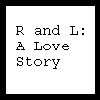This narrative problematizes the place which truth and authenticity occupy in relation to the story. The reader is constantly reminded that it is, indeed, a true story, but the story being presented changes depending on the reader's choices. The story is inherently more convincing if a reader follows one perspective straight through to the end, but in doing so, the reader has to sacrifice the option of getting information from other perspectives. However, if the story is read through from several or all of the perspectives at once, the characters appear to be inconsistent at best, unconvincing and flat at worst. But this is a true story.
Thus, clearly the signified has a hermeneutic value: every action of the meaning is an action of truth: in the classic text (dependent upon an historical ideology), meaning is mingled with truth, signification is the path of truth: if we succeed in denoting the old man, his truth (castration) is immediately revealed. Yet, in the hermeneutic system, the connotative signified occupies a special place: it brings into being an insufficient half truth, powerless to name itself: it is the incompleteness, the insufficiency, the powerlessness of truth, and this partial deficiency has a qualifying value; this birth defect is a coded factor, a herneneutic morpheme, whose function is to thicken the enigma by outlining it: a powerful enigma is a dense one, so that, provided certain precautions are taken, the more signs there are, the more the truth will be obscured, the harder one will try and figure it out. - Roland Barthes, S/Z
Barthes alludes to truth in this passsage, but he is referring to the idea of truth within the structure of the intitial fiction of the story; what happens to the truth when you allude to it as something outside of the confines of the story? R and L: A Love Story carries with it the allusion to all the stories which the reader is not getting, everything which has happened and will happen outside of the parameters of what is defined by true love, domestic bliss, boredom, trouble, and romance. In this work, everything functions as at once, the connotative signified and the real. The real is defined, in this context, as something which the reader believes in, a sort of anchor to the truth which defines the parameters of reality, i.e., the true nature of the relationship. If the reader is willing to acknowledge all of the information given as true, notions of a single univocal truth must be discarded. And yet, this is a true story.
This (therefore) will not have been a book. Still less, despite appearances, will it have been a collection of three "essays" whose itinerary it would be time, after the fact, to recognize; whose continuity and underlying laws could now be pointed out; indeed, whose overall concept or meaning could at last, with all the insistence required on such occasions, be squarely set forth.-Jaques Derrida, Disseminations
